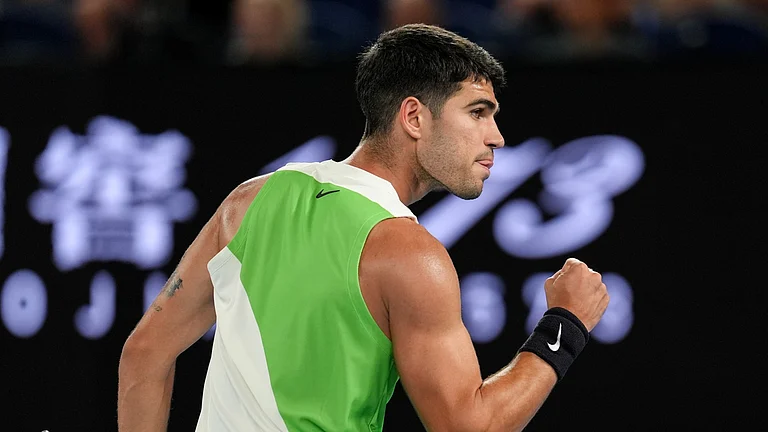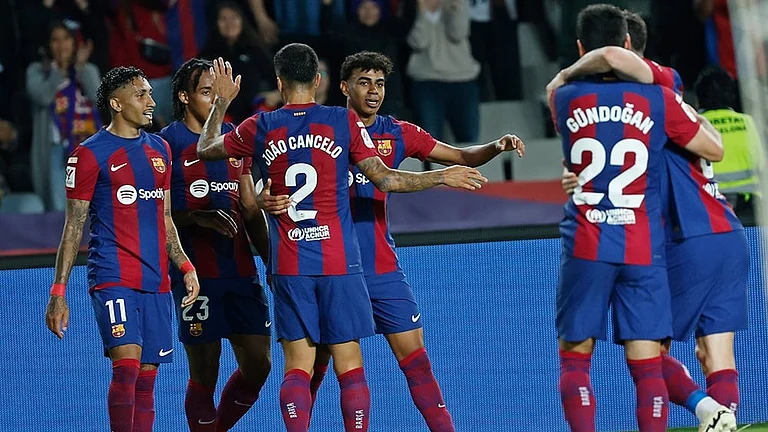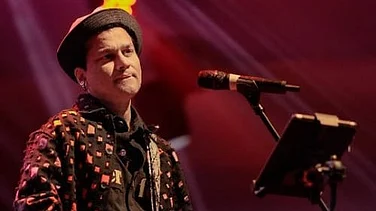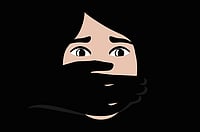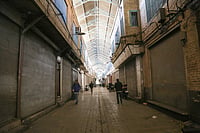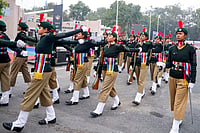For the past seven days, France has witnessed nationwide violent protests over the death of a 17-year-old boy in police firing. The violence was also reported in French overseas territories and in a French-speaking city in neighbouring Switzerland.
During the week, police personnel have been attacked, cars have been burnt, public buildings have been vandalised, shops and businesses have been looted, and at least one top local official's residence was specifically targeted. Thousands have been arrested and detained by the police.
Since the teen's killing last Tuesday, protesters have come out in large numbers every night and have engaged in widespread rioting across French cities. At one point, 45,000 police personnel were deployed on the streets to contain the situation that at one point threatened to spiral into a situation that reminded people of a similar episode in 2005 when the deaths of two persons running away from police triggered three weeks of nationwide rioting that led to the imposition of emergency.
So far, French President Emmanuel Macron has not imposed the emergency and there are signs that the law and order situation is improving. His own profile has taken a hit after it emerged that he was at a concert last Wednesday when violence was starting to break out in France. He also had to postpone a state visit to Germany, which would have been the first by any President of France since 2000.
Outlook explains what triggered the protests in France to understand the timeline of incidents that led to it and the developments that followed.
Timeline of Nahel's death
Nahel, identified mostly by just his first name, was shot dead by a policeman in Nanterre, a suburb of the French capital Paris, on June 27. He was 17.
The policeman who shot Nahel is in custody and has been charged with voluntary homicide. The French prosecutor on the case has said that the firing was not legally justified.
Nahel was in a vehicle that was stopped by the police. There were two more persons in the vehicle.
In a video of the incident, two police personnel are seen on the driver's side of the car with their guns drawn. As the car drives away, one policeman appears to fire at the car and a gunshot-like sound is heard. The later segment of the video shows the damaged car after it collides on the roadside.
Two accounts of the incident have so far emerged. One account is by the prosecutor based on the investigation so far. The second account is of one of the two persons in the car with Nahel at the time of the shooting.
The prosecutor's account
In the prosecutor's account of events of June 27, it's understood that the car Nahel was in had ignored police instructions to stop and police were in pursuit when it was finally stopped amid heavy traffic.
This account is based on eyewitness testimony and a review of CCTV footage, according to BBC News.
As per this account, the sequence of events starts at around 8 am when two police personnel spotted Nahel's car driving fast in a bus lane. The police personnel sought to stop the car but the car drove away against police directive, according to Nanterre prosecutor Pascal Prache.
Prache said that the two police personnel flashed the incident on the police radio and gave a chase.
At 8:16 am, the car finally stopped amid heavy traffic and the police personnel approached it with guns drawn.
"They later told prosecutors that they pointed their guns at the driver to 'deter him from driving away again'. They asked the driver to turn off the ignition, but the car moved forward. One of the officers fired, fatally wounding the young man in the chest," reported BBC.
The account of Nahel's co-passenger
Similar to the prosecutor's version, the co-passenger of Nahel said that the car entered the bus lane and was chased by the police.
However, the account differs in the final moments of the incident. The co-passenger, in an interview with Le Parisien newspaper, said that the policemen hit Nahel multiple times with the butt of their guns.
After Nahel was hit for the third time by the policemen, his foot got off the brake and the car shot forward, following which he was fired upon, reported BBC, citing the passenger's interview.
"The third blow, according to this account, caused Nahel to take his foot off the brake and the vehicle to move forward. After the officer fired, Nahel M slumped forward and his foot pressed on the accelerator, the passenger said," reported BCC, adding that while the other co-passenger was apprehended, this co-passenger fled the scene.
Week-long violence in France
France has been rocked by nationwide violent protests for a week now. Police personnel have been attacked, vehicles have been burnt, public buildings have been attacked, and shops and businesses have been looted. A mayor's house was also attacked in which his wife was injured.
The protests have been fuelled by beliefs that Nahel's identity was key to his death. His mother has said that the policeman saw "Arab face, a little kid, and wanted to take his life". Nahel was an Arab Muslim of Algerian descent.
The first protests broke out last Tuesday night around the Parisian suburb of Nanterre, where Nahel was shot dead. However, the protests picked up real pace from Wednesday night.
Wednesday
Protesters, mostly youth, clashed with the police in Nanterre and set cars on fire, burnt trash, and threw fireworks.
Town halls, police stations, and other public buildings were also attacked.
The New York Times reported that nearly 200 people were arrested and 170 police personnel were injured.
Thursday
The violence escalated on Thursday and around 2,000 cars were burnt and around 500 buildings across France were damaged. The police had to resort to tear gas shells to deal with the crowd.
By then, around 40,000 personnel were deployed across France to contain the situation, but the violence continued.
President Emmanuel Macron cut short a visit to Brussels where he was attending a European Union (EU) summit.
A total of 667 people were arrested and 249 police personnel were arrested overnight, reported French paper Le Monde.
Shops and businesses were looted and burnt across France and buildings, including schools, were set on fire across France.
The night was marked by the pillaging of shops, reportedly including flagship branches of Nike and Zara in Paris, and public buildings were also targeted, with a police station in the Pyrenees city of Pau hit with a Molotov cocktail and an elementary school and a district office set on fire in Lille, reported Le Monde.
The paper further reported that rioters used a truck to force open the entrance to a shopping centre in Parisian area of Drancy, which was then partly looted and burnt. A library in Marseille was also vandalised. Several places, including a hotel, were also set afire in Roubaix.
Friday
By then, around 45,000 personnel were deployed across France to contain the violence.
The Times reported that 1,300 were arrested on Friday.
Despite an increase in the number of personnel deployed, the violence continued.
"Despite the security presence, looting took place Friday night in the cities of Marseille, Lyon and Grenoble, with bands of often-hooded rioters pillaging shops. Protesters also set fire to cars and trash bins...Provisional ministry numbers released early Saturday also included 1,350 vehicles and 234 buildings torched, and 2,560 incidents of fire set in public spaces," reported Le Monde.
Saturday
Saturday was calmer than the previous days but arrests were carried out that day as well as rioters were on the streets.
More than 700 were arrested and 45 police personnel were injured, according to authorities.
The highlight of the night's violence was the car attack on the house of Vincent Jeanbrun, Mayor of the Paris suburb of L'Haÿ-les-Roses. Jeanbrun's wife was injured in the attack in the attack that also saw arson.
"The attackers used a car to ram through the gates of their home before setting the vehicle on fire so that the blaze would spread to the house, the mayor said in a statement. Then when his wife, Melanie Nowak, tried to flee with the children, aged five and seven, they were attacked with firework rockets," reported BBC.
Sunday
Sunday was relatively calmer than the previous days but still witnessed the arrest of 719 persons, bringing the number of total persons detained to over 3,000.
There were signs of normalcy in Paris as tourists began to return to sites like the Eiffel Tower.
"In the capital, tourists thronged to the Eiffel Tower, where workers set up a nearby clock counting down to next year's Paris Olympics. A short walk from Nanterre, a shopping mall bustled Sunday with customers from all walks of life. Families who could afford it headed for summer vacation," reported The Associated Press.
Monday
Anti-riot rallies were held at town halls across France on Monday as violence by protesters further eased.
The AP reported that, during the protests, as many as 99 town halls were attacked.
"Across France, 34 buildings — many of them linked to the government — were attacked from Sunday into Monday, along with 297 vehicles," reported AP.








